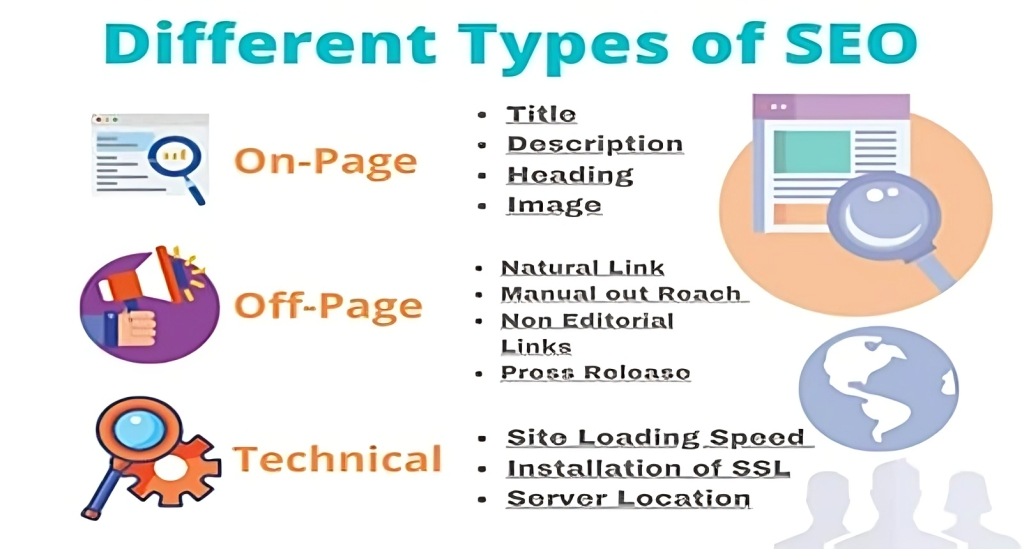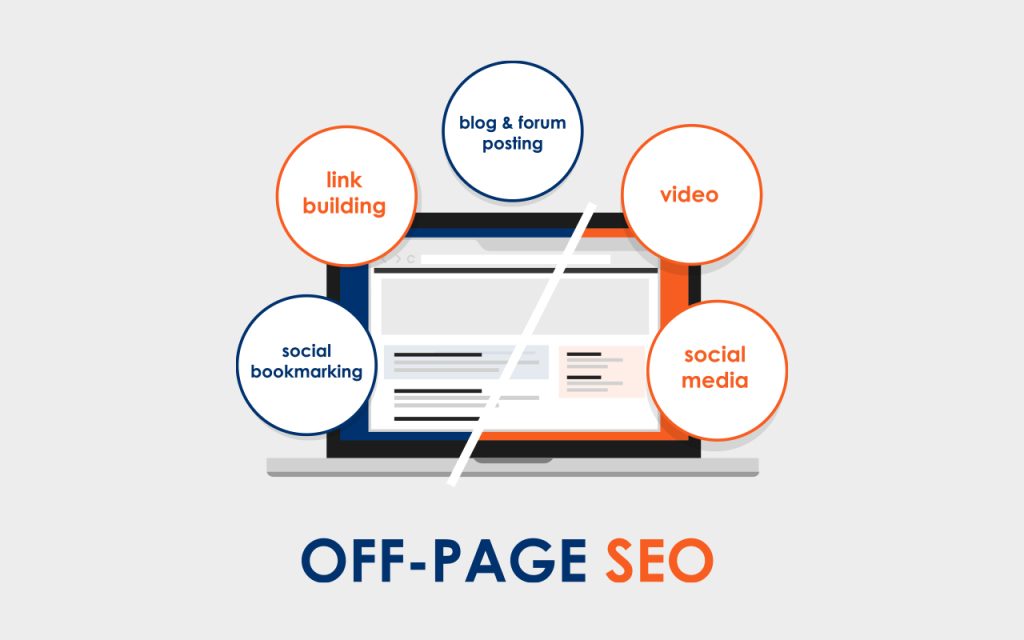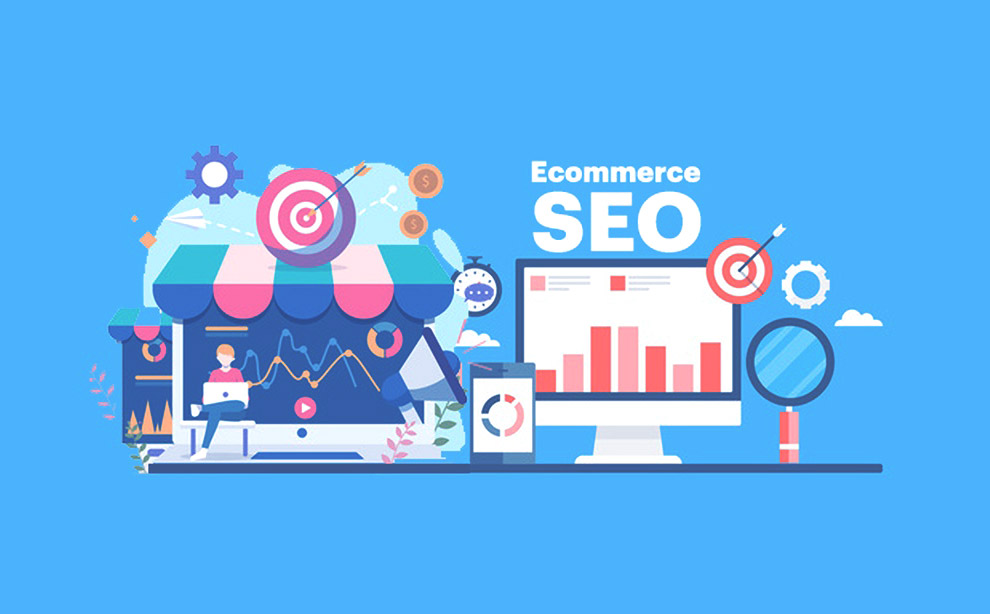SEO, often known as Search Engine Optimization, is a multi-faceted process with numerous variations. The same objective underlies all SEO techniques: improving a website’s visibility in search results. You will discover the many types of SEO in this article, along with the SEO strategies that work best for each.
Types Of SEO

Let’s begin with a brief explanation of what SEO is.
Through the use of SEO, a website may be made more user- and search engine-friendly. The major objective of SEO is to increase organic traffic to your site to generate more relevant leads. SEO can help your site improve its ranking on different search engines.
The SEO sector has developed many sorts of SEO to make it easier to handle. SEO is a complete-detailed process with rules and regulations, these SEO rules make your presence stronger in search engines. It’s crucial to realize that these SEO subsets do not represent a distinct process; rather, they are only a method of decomposing a challenging process into a number of simpler processes.
The different SEO types are thus:
- SEO techniques
- SEO on-page
- SEO content
- SEO off-page
- Regional SEO
- cellular SEO
- Shopify SEO
According to the diagram below, technical, on-page, and off-page SEO are the most crucial.
Technical SEO

Technical SEO is a specific term that helps the website to perform better on the customers’ side. The fundamental objective of technical SEO is to make sure that a website can be easily crawled and indexed by search engines.
The following are the key technical SEO recommendations:
- In order to ensure that search engines can properly visit your website, review and optimize your robots.txt file.
- Add your website to Google Search Console, verify it, and enter your preferred domain.
- Coverage reports are used to identify crawling issues
- Publish an XML Sitemap to all the main search engines.
- Improve the URL and site architecture.
- Adhere to SEO-friendly web design
- Develop websites that open quickly on desktop and mobile devices.
On-Page

On-page SEO focuses on the page structure and on how to make it more user- and search engine-friendly. However, SEO is a broad term and a whole website is considered one to highlight on SERP. Because of this, it’s crucial to focus on optimizing each and every page of your website.
The following are the key on-page SEO recommendations:
- Improve the titles of your pages. This is an essential SEO component. Page titles, which are displayed in the search results and should entice users to click, should be intriguing. Search engine bots should be able to deduce the topic of a page’s content from the title alone.
- Improve the H1 Tag. The H1 tag is what is displayed as the top heading of a page, even though the page title is displayed in the SERPS. A page that has been optimized just contains one H1 tag, and it often uses the same values as the page title.
- Improve your headings. A page must also have subheadings (H2, H3) for the various sections in addition to the H1 tag. Subheadings can make the long-form text on a website easier to read and scan by crawlers.
- SEO for pictures, A page’s images should all be correctly optimized in order for search engines to grasp what they are supposed to represent. Image SEO depends on factors like filename, file size, and ALT text optimization.
Content SEO

formatting a page. It is not a smart SEO strategy to publish a page with text and graphics without taking the time to enhance the content. Although a page cannot be “seen” by Google in the same way that a human can, there are ways for them to comprehend how a page looks or whether it is cluttered with pop-up adverts, and this is taken into account when ranking pages. On-page SEO has a subclass called content SEO. The focus of content SEO is on improving the material’s quality.
Many people consider this to be one of the several forms of SEO because it is a crucial component of SEO success. However, you may frequently discover content recommendations under on-page SEO, which is also a legitimate strategy. The key to success is producing excellent content that both people and search engines can understand.
You can adhere to the following advice to do this:
- The process of creating content should begin with keyword research. Locate the SEO terms that are crucial for your website and use them in your content.
- Consider going even farther and adding long-tail and semantically relevant (LSI) keywords to your titles, headers, and body copy.
- In order to provide users with what they want and give search engines enough information to grasp the context of your material, publish content that is complete and long enough.
- To assist users in learning more about a subject, link out to other trustworthy websites (if it makes sense) and other pages on your website.
- Use schemas and structured data to highlight key elements of your content for search engines.
Off-Page

The main focus of off-page SEO is promotion. Off-page SEO refers to strategies you can use to advertise your website on the Internet, whereas the previous types of SEO focused more on the structure and content of the website.
Well-known brands and their websites are more likely to appear higher ranking on Google and other SERPs rather than on less popular sites.
Below mentioned are a few of the off-page strategies:
- Link Building is the practice of obtaining SEO backlinks from other websites.
- If the no-follow tag is not present, these hyperlinks function as “votes of trust” and raise the authority of the destination website.
- Promotion of brands. Because people trust well-known businesses, Google prefers to rank them highly in the results.
- You should work on advertising your brand and creating discussions about it on the various social media networks and forums, in addition to promoting your website to gain backlinks.
- Google is able to detect these signals and reward popular websites.
Local SEO

Local firms should only use local SEO, according to experts. In other words, you should optimize your website for local SEO if you have a website and want to attract customers to your nearby store. All the aforementioned information still applies to local SEO, but with the following recommendations:
Make sure your company name, address, and contact information are shown on every page of your website.
- On your homepage, incorporate the Local Business schema.
- Put your information on GMB (Google My Business).
- Register your company with reputable directories like Foursquare, Yelp, and Yahoo Small Business.
- Promote your website on regional websites and directories (for example online local newspapers)
Mobile SEO

Mobile SEO, just like local SEO, is a subset of SEO terms. It helps to rank mobile apps on Play Store. Over 60% of Google searches are now made on mobile devices, which is a reality. This is a sizable amount and a clear sign that Internet usage is shifting from traditional desktop computers to mobile devices.
In order to succeed with mobile SEO, you must:
- You have a mobile-friendly website. Starting by running the mobile-friendly test is a smart idea.
- On mobile, the webpage loads quickly.
- Mobile users can easily navigate the website.
- Popups, aggressive advertising, or interstitial banners do not interfere with the mobile user experience.
eCommerce SEO

The e-commerce sector is very large. An e-commerce website requires more advanced search engine optimization techniques than a blog or business website. An e-commerce website is considerably harder to promote and has a lot more pages that need to be optimized.
The following eCommerce SEO variables are crucial:
- The homepage and category pages are where you should start when optimizing an online store. Before you begin to work on your product pages, these two-page kinds must be appropriately optimized.
- Utilize the findings of your keyword research to optimize your product pages.
- Optimize ALL of your store’s graphic components (images, videos)
- Add the required schemas (product, offers, etc.)
- Use Social Media Platforms to advertise your products and store.
- Consider original strategies to encourage people to link to your product pages.
- Create a blog and post articles on your products and how they can be used to aid people.
Read: Most Effective Time to Post On Social Media
Key Principles
One of the most effective digital marketing strategies for any kind of website is SEO. An SEO-optimized website gains a high search engine presence and enhances user experience.
The SEO process is divided into a variety of sub-processes or categories to make it easier to manage. Technical SEO, On-Page SEO, and Off-Page SEO are the three most significant subcategories.




